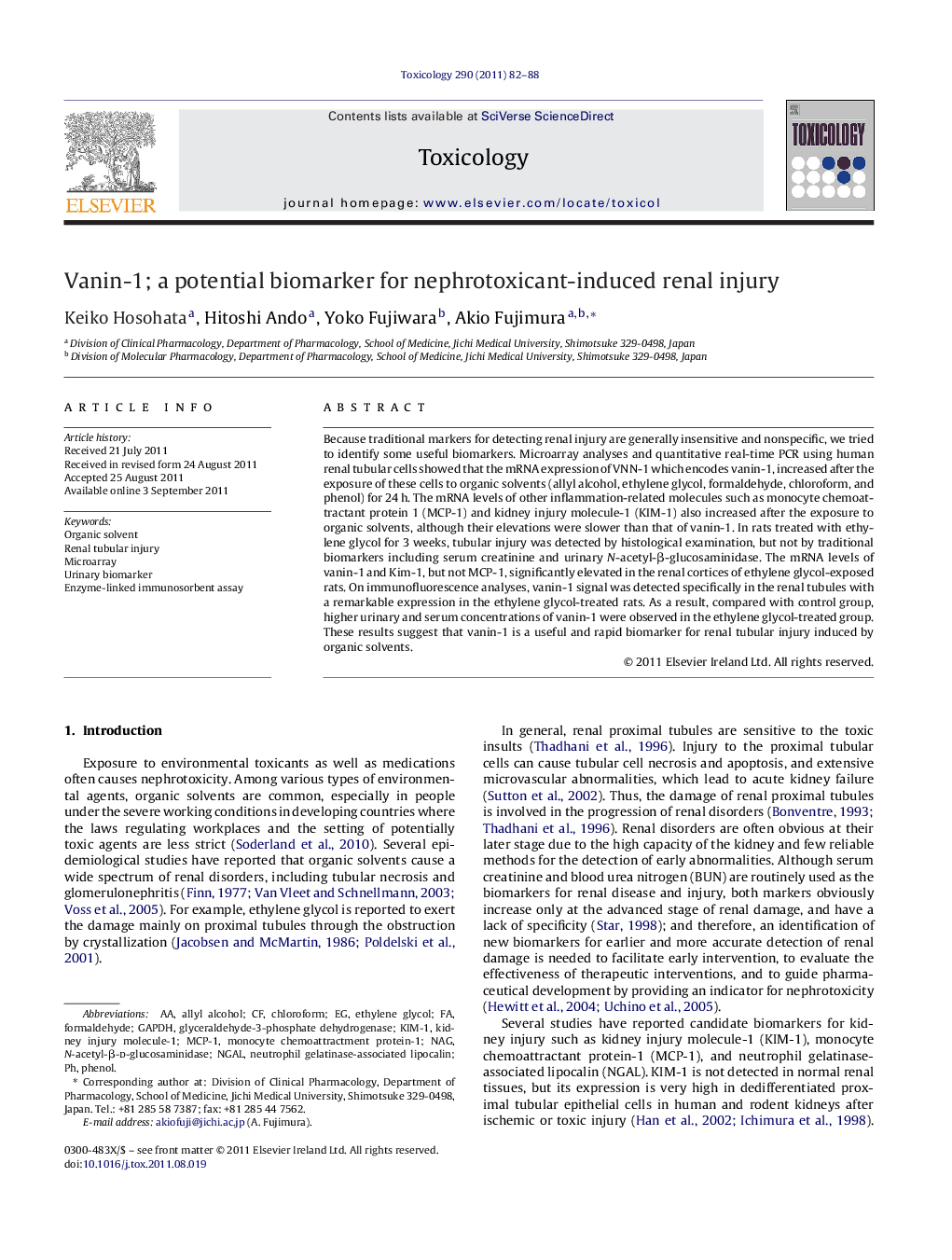| Article ID | Journal | Published Year | Pages | File Type |
|---|---|---|---|---|
| 2595942 | Toxicology | 2011 | 7 Pages |
Because traditional markers for detecting renal injury are generally insensitive and nonspecific, we tried to identify some useful biomarkers. Microarray analyses and quantitative real-time PCR using human renal tubular cells showed that the mRNA expression of VNN-1 which encodes vanin-1, increased after the exposure of these cells to organic solvents (allyl alcohol, ethylene glycol, formaldehyde, chloroform, and phenol) for 24 h. The mRNA levels of other inflammation-related molecules such as monocyte chemoattractant protein 1 (MCP-1) and kidney injury molecule-1 (KIM-1) also increased after the exposure to organic solvents, although their elevations were slower than that of vanin-1. In rats treated with ethylene glycol for 3 weeks, tubular injury was detected by histological examination, but not by traditional biomarkers including serum creatinine and urinary N-acetyl-β-glucosaminidase. The mRNA levels of vanin-1 and Kim-1, but not MCP-1, significantly elevated in the renal cortices of ethylene glycol-exposed rats. On immunofluorescence analyses, vanin-1 signal was detected specifically in the renal tubules with a remarkable expression in the ethylene glycol-treated rats. As a result, compared with control group, higher urinary and serum concentrations of vanin-1 were observed in the ethylene glycol-treated group. These results suggest that vanin-1 is a useful and rapid biomarker for renal tubular injury induced by organic solvents.
► Vanin-1 mRNA expression increased in the renal cells exposed to organic solvents. ► Urinary vanin-1 concentration elevated before the conventional markers changed. ► Vanin-1 is expected to be a biomarker for the nephrotoxicant-induced renal injury.
